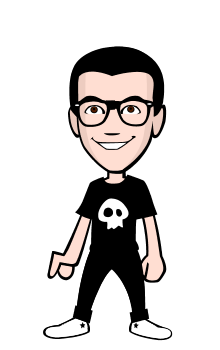A couple days ago, I gave you some general information about storyboards and in this occasion I want to share with you some tips about this work from my own experience.

I started to draw storyboards in the University for my own personal project, this starts basically because I love comics and I like to draw, so it was the perfect mix between those areas. But with the pass of the time and with more knowledge I started to understand storyboards in deep. Well ok, at first, this looks really easy to understand but this is all about communication.
The main difference between storyboards and comics, is that the comic-book and graphic novels are are an artwork in themselves. And the storyboard at first, is a resource to explain in a graphic way what a filmmaker needs for his movie(or what a publicity work needs).
When I began to make this I always wanted to make really beautiful storyboards and just a little times I could had the time that I need to make them. IN most of the cases I used to start with really detailed drawings and at the end I finished with really ugly and fast drafts. This started to frustrate me for a while and with the pass of the time I began to evaluate the time of production and with that I decide how much time it´s going to take me to draw an storyboard.
Basically I had understood that everything is for the good of the movie, and I left my "drawer ego" in order to communicate what another director want, or what a publicity agency, or me needs to communicate.
One example, in this cases the information is the same:

So if you draw with stick and circle persons it´s fine, that works mainly when you are working in your own projects as a director or when the team is really closer to you. In the case of work for another person, in most of the cases for publicity, you need to draw in a "standard" way, that means that you should draw in a "correct" way. The important thing for this is to have the ability to draw an standard kind of "publicity" people and have the basic notions of depth of field. You don´t need to work deeper in the details, mainly because sometimes you could put too much information, it´s easy to know when you are putting so much details, the case is this: if you are drawing, and one single drawing is taking you really a lot of time, that is because you are putting too much things in the drawing. Ok, I´ll show you when is too much, when is too less and what is enough for publicity.

About the technique, there´s not rules on that. The way of draw a storyboard is really free, you can use pencils, pens, inks, watercolors or digital tablets to draw and there´s going to be no difference between the result, of course there´s going to be some style differences, but as I told you, the main thing is to communicate. The most important thing is to be clean and show the storyboards in a good order.
I started to draw in a digital tablet just a couple months ago and just in the moment that i started, a client from the Arab Emirates ask if my drawing could be like handmade. Some directors like in one way and another in other, so, when you join some project, is always good to talk in deep what the director or client want from your drawings.
So, if you have an script or an idea, try to make an storyboard to show and expose your idea to other people and with that you are going to see if is working or not. But, well if you hate drawing and you don´t want to make and storyboard you can use another ways to communicate, like use lot of movie references and test videos. Please remember that for cinema there´s no rules and each director or filmmaker creates his/her own ways to work, and this is like the life, the most important things to try to make real what you dream and what you want to do.
IGNACIO



